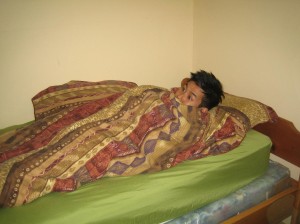Fever is basically a normal reaction and a clear indication that the body is fighting off an infection. When a child has fever, the body temperature is higher than normal. Once fever is breaking down, the worst is over and the temperature of the child will return to normal. Even though fever will improve the immune defense of the body, it will make the child feel uncomfortable when it is already breaking down.
By being familiar with the symptoms of fever and when it is about to break down, you can take the appropriate steps to provide relief as well as comfort to the child. You can learn these measures by enrolling in a first aid class today.
Fever

The body temperature of the child tends to vary with activity, age and the time of day. It is important to note that infants have higher temperatures that the older children. An oral reading of 99 degrees F or less as well as a rectal reading of 100 degrees F is considered normal. Various factors can cause fever including bacterial, viral and parasitic infections, teething and common cold. Take note that fever usually breaks on its own once the body has beaten the cause of the fever.
Temperature
Fever occurs once the body temperature is higher than 100 degrees F. When it breaks, the body temperature of the child will start to reduce and return to the normal level. This is a good indication and does not need any form of treatment. The best way to determine if the child has fever or if it going down is to take the temperature. The most accurate method is via the rectal route but the axillary, ear or oral route can be used.
Bodily symptoms
When a fever is breaking down, the child has various symptoms include chills, sweating, weak and tiredness. You can ease the symptoms by dressing the child lightly if he/she is sweating or cover with a blanket if he/she feels cold. Encourage the infant to rest until the body temperature is back to normal.
Appetite
Take note that fever can make the child lose his/her appetite. Once fever is breaking, the child will start to feel hungry again. Provide the child with milk, applesauce or other solid foods he/she loves to eat.
Behavior
The behavior of a child can indicate discomfort caused by fever. When the fever is breaking down, the infant can be fussy, irritable and cry. In case the child is uncomfortable and has a body temperature higher than 102 degrees F, you can ease the discomfort by providing medications for fever. These medications can help bring down the body temperature by blocking the mechanism of fever.
Considerations to bear in mind
It is best to schedule an appointment with a doctor if the child has fever even if it is mild. Always bear in mind that fever can indicate a serious infection. Additionally, a doctor must be consulted if the fever of the infant has not broken down within three days or continues to worsen.
